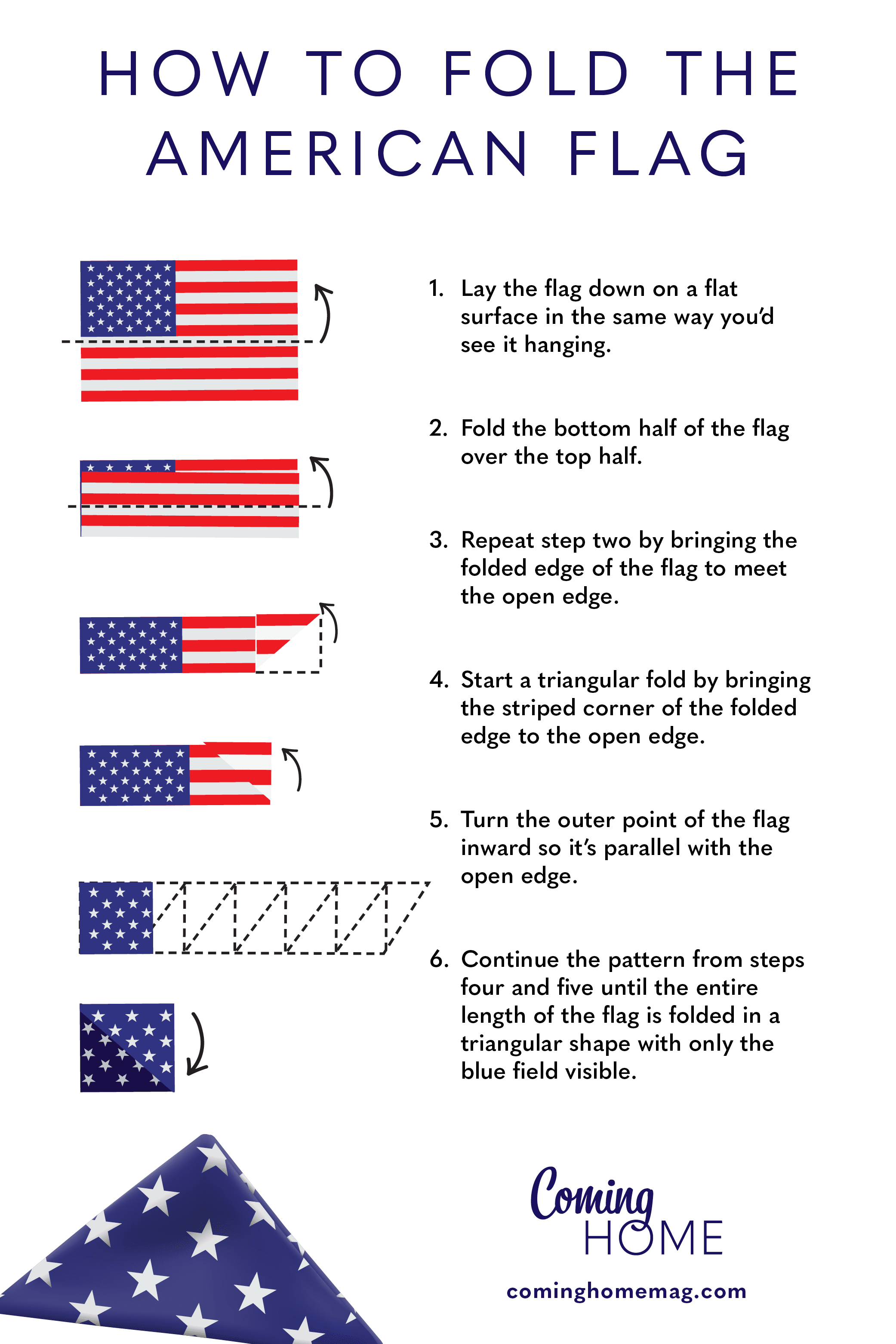American Flag Etiquette for the 4th of July
The Fourth of July is all about celebrating our national pride, and nothing symbolizes that better than the red, white, and blue of the American flag. If you’re planning on showcasing your flag for the holiday, keep in mind that there’s a right way to do this and ensure you’re respecting what the flag represents.
Follow these American flag tips as you display the stars and stripes to honor freedom.
About the American Flag
The American flag was signed into law as the official flag of the U.S. on June 14, 1777. At the time, it stated that the flag should be “thirteen stripes, alternate red and white” and that the union, comprised of the thirteen original states, be exemplified by “thirteen stars, white in a blue field, representing a new constellation.”
Many historians believe the flag was designed by Congressman Francis Hopkinson and sewn by seamstress Betsy Ross, but officially, the origins of the flag’s design are unknown.
The number of stars and stripes on the American flag has changed throughout the years. Notably, to reflect the statehood of Vermont and Kentucky, two additional stars and stripes were added to the flag in 1795.
In 1818, it increased to 20 stars and decreased to 13 stripes; and in 1912, it increased to 48 stars. The 50-star flag we know today was adopted in 1960 after Hawaii and Alaska became states in 1959.
The current flag is now the longest-used flag in United States history.
The U.S. Flag Code
American flag etiquette is more than just a courtesy—it’s the law. The United States Flag Code acts as the official advisory on the appearance and display of the American flag by citizens.
Established in 1998, the code includes rules for when and how you can display the flag, buildings on which you can display it, and much more, including:
- The use of the flag in advertisements.
- Reciting of the Pledge of Allegiance in schools.
- Handling flag desecration and misuse.
- Conduct when the U.S. National Anthem is being played and a flag is on display.
How to Display the American Flag
While it’s common to see flag-style tablecloths and banners at Fourth of July celebrations, the American flag isn’t supposed to be used for decoration.
Using the flag as a piece of clothing, like a cape, is prohibited, and some consider it distasteful to have the flag drawn onto clothes.
If a flag isn’t flying, it should be displayed vertically and suspended so its folds fall freely. Stripes can be displayed vertically or horizontally against walls, with the union of stars facing to the left of any observers.
How to Fly the American Flag
Any flag hung for the Fourth of July should have a uniform design: 13 horizontal stripes, alternating red and white, and a union of 50 white stars on a field of blue. If you’re flying a flag on a flagpole, the union should always be at the peak of the pole.
Flags hanging vertically or horizontally above the ground should have their unions facing the left-hand side of the main observers. The U.S. Flag Code advises citizens to also:
- Never dip a flag to any person or thing.
- Never fly flags that are ripped, stained, or unpresentable in any way.
- Never write or make marks on a flag.
- Never let flags touch the ground.
- Only fly flags that are kink and fold-free.
- Only fly flags from sunrise to sunset unless they’re well-lit in the dark.
How to Fold the American Flag
When a flag isn’t on display, it should be folded consistently. The correct way to store the flag is by folding 13 times into a triangle, representing the country’s historic thirteen colonies.

How to Dispose of the American Flag
According to the U.S Flag Code, all flags should be disposed of in a dignified manner when they’re no longer fit for display. There are a few ways to go about doing this respectfully, including:
Flag Donation
Many states offer residents designated locations to donate worn-out flags. Organizations that take these donations will then manage the appropriate disposal process. Simply search “flag donations near me” to find options.
Flag Burning
Commonly used to dispose of flags in the military, a flag-burning ceremony involves:
- Folding the flag.
- Placing it in a fire.
- Saluting it.
- Reciting the Pledge of Allegiance.
- Having a moment of silence.
The burned ashes of the flag are then buried.
Flag Burial
Flags can also be buried without being burnt, as long as they’re properly folded and placed in a dignified box.
Flag Recycling
Some companies, like Stars for Our Troops, will accept used flags and salvage portions and give them new life.
Fill Up for the Fourth of July
Now that you know how to respect the U.S. flag during your Fourth of July celebration, it’s time to flesh out the rest of your fun plans. Amp up your barbecued cuisine with “4 Unsuspecting Foods That Taste Glorious When Grilled.” Try one out alongside this year’s fireworks and festivities—you just might land on a new favorite!